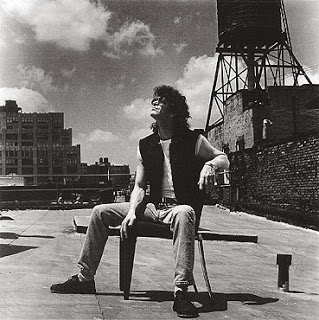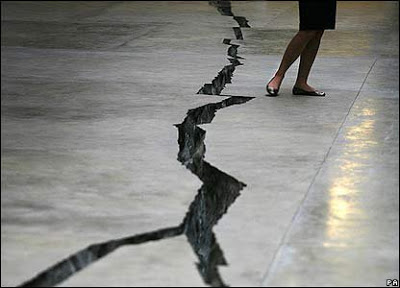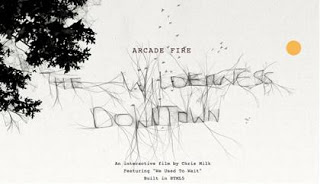Art Vent Letting the Fresh Air In
October 2, 2010
I find I have taken an inadvertent vacation from my blog—not for any particular reason, I just didn’t have any thoughts or opinions, which anyone who has known me for longer than five minutes will find difficult to believe. It happens rarely, but it does happen.
I did go to the Chelsea gallery openings and saw some shows I enjoyed (Joan Snyder, Judy Pfaff, and Jane Rosen) and others I thought were ridiculous (best left unsaid), as well as Gerhard Richter at the Drawing Center in SoHo, which I didn’t love but, regardless, found surprisingly inspiring. I bought the catalogue and when I came back to my studio, all I wanted to do was draw.
I also discovered a new art material: PanPastels. A while ago, out of the blue, the company sent me some samples to try, and I recently unearthed them. They call them “painting pastels,” and the colors, which are highly pigmented, come in little pots like rouge and are not overly dusty, so it’s like painting, but without the muss and fuss. I love that I can just up and leave the drawing board and when I come back hours later my brushes haven’t gone stiff, and nothing has dried up. They can be purchased in individual colors ($5.14 each at Dick Blick) and in sets, and my only complaint is that the sets don’t really contain what I want (you have to order a set of 20 to get one that contains orange!) and if they do there are duplicates (Payne’s Gray appears in both the gray and the blue sets of five each). But it’s a small quibble, and every day I compulsively order more.
Lou Reed on my roof, in a chair by Phillippe Starck. Photo by Christian Coigny for Vitra, ca. sometime in the 90s
Comments (2)
September 17, 2010
Since Terry Perk is here from England to edit, with cinematographer Erica Spizz, our short film about the collaboration between Olafur Eliasson and Einar Thorsteinn, this is a good moment to post some photos from Olafur's Berlin show--his first--at the Martin Gropius-Bau exhibition hall.
The Model Room, reinstalled:
A room of fog that changes colors:
September 6, 2010
Doris Salcedo, Shibboleth (2008), Tate Modern, London
Thanks for the thoughtful comments on the post below, and if you didn’t read them before, please do. They are all worth reprinting, but here are two snippets:
“beebe” said: The problem at this point is systemic. Having somewhat recently gone through an MFA program, the main focus was on the statement--talking about the work, weaving a skein of bullshit around the work. The language surrounding the work and your inevitable defense of the language (and, secondarily of course, the work) is more important than actively making better work.
From “CAP”: Even critics want to take their cue from the artist's best intentions, in advancing an interpretation or assessment. But this really reflects a lack of confidence in an historical framework and personal intuition. The critic turns to intention to skirt thornier issues of style and form….
Whenever I bring up artist’s statements, it seems to touch a nerve. And rarely, if ever, have I gotten a comment in their defense (such as “I love artist’s statements!” “Once I read one, I can't wait to read more!”) yet they persist—like the weather, everyone talks about them but no one actually does anything.
There are several issues at play here. “Thi Bui” who doesn’t like “self-absorbed or insincere statements either” asks, however, “why don't we care about where the work comes from, or what the artist is trying to do?”
We don’t care because it has nothing to do with the experience of the work. Like music, the beauty of visual art—emphasis on the word visual—is its ability to communicate through non-verbal means, and is therefore more about sensation than thought. The delight is in its mystery, which by its nature defies explanation. If we want to communicate messages, writing is a better vehicle.
Also, any statement that tells us what a work is about or what the artist intends, limits the interpretation—in effect it pre-digests the experience so that it's hard to see it through any other lens. My favorite example is Doris Salcedo’s (2008) installation,
the “crack” at the Tate Modern that I wrote about with relish in two blog posts. On its own, the piece was quite powerful; recalling fault lines or dry riverbeds, it threatened our sense of stability and security, brought to mind all manner of social and physical separations and divisions, the unknown beneath our feet, the feeling that nothing is permanent, nothing is forever, that there are forces bigger than ourselves….and I’m just getting started. But once you become aware that Salcedo sees her work as “addressing a long legacy of racism and colonialism that underlies the modern world…” the whole thing goes flat, suddenly no more than a grandiose illustration of a lofty and banal idea.
Artists work from instinct, and may not be aware of the various possibilities of experience and interpretation that the work makes available. Interpretation is the work of philosophers and critics, and as an artist I’ve learned more about what my work “means” by reading about it than I did through the thoroughly intuitive process of making it.
The problem is that curators and critics are also relying on biography, intention, and social content to interpret art and justify it. When I wrote my article about Anne Truitt for Art in America, I devoted a portion of the article and several blog posts (see label for Anne Truitt) to the way the curator insisted on interpreting Truitt’s work through biography in the most elementary way—while acknowledging that “Truitt herself was reticent to make fully explicit the connections she nevertheless acknowledged between her life and art.” I came to the conclusion that the curator, who was a graduate of a curatorial program, simply did not know any other way to assess art.
However there is another way: observation
—
the act of looking at and experiencing the work and, as CAP points out, having confidence in our personal intuition.
What’s there is there, right in front of you, and what’s not there is….not.
Photo: Carol Diehl (2008)
September 6, 2010
I guess I’m out of it if I have to read about viral video in the Times—even Glenn Beck is ahead of me here. But if I missed The Gregory Brothers “Auto-Tune the News” on You Tube, maybe you did too. When I was awake last night, unable to sleep at 3:00 a.m., this had me laughing out loud.
September 2, 2010
An interactive film by Chris Milk
Featuring "We Used To Wait" by Arcade Fire
A merging of art and technology that doesn’t require any kind of “statement.” Click on The Wilderness Downtown and follow the instruction. You may need the Google Chrome browser for this, but it’s worth it—actually I like Google Chrome, and find its single address/search box very handy.
Prepare to be blown away.
August 29, 2010
JohnWilliams Waterhouse (1849-1917) Echo and Narcissus (detail). Copyright may apply.
It’s the eve of another art season and here I go again with my annual (semi-annual? daily?) rant about artist’s statements. As I’ve said numerous times before, when I am king, I will abolish them. It’s just not happening fast enough.
Every day or so I get a newsletter from NY Arts which, along with a lot of helpful, newsy articles, includes their seasonal “Editorial Preview” of an artist’s work, based on the artist’s statement. What it demonstrates is that a certain solipsistic way of writing and thinking about art has become an international epidemic.
Chinese artist: “My work mainly comes from my own personal experience.”
Romanian artist: “I see my work as a process of a constant production of the self.”
Italian artist: “I developed this concept from a personal perspective; in fact, most of my artworks are autobiographical and describe a familiar conflict.”
American artist: “I was always defined (and profoundly accepted) by the identity markers that were given to me, Chicana, female, lesbian, working-class, etc. But, now I am expanding those ideas to include a larger worldview that positions me as a central part in the landscape of nature.”
Romanian artist: “I feel that my art is an uninhibited territory for me….All around, my works are thoughts and emotions turned from the inside out, like you would a stuffed teddy bear.”
(Note: The preponderance of Romanian artists doesn’t necessarily reflect a particular cultural self-absorption, there were just more of them represented on the site.)
I mean, really, who gives a flying fuck where the work comes from or what the artist is “trying” to do? We don’t care! We don’t care about what you “want” to do, are “trying” to do, how miserable or fabulous your childhood was, or what you’ve always been interested/fascinated/obsessed with. We don’t care about your relationship with your culture, and we certainly don’t want to know about your relationship with your body.
Show me the money!
August 27, 2010
I am writing a new blank document.
This is another paragraph.
This is another paragraph.
August 17, 2010
Every year at this time, the media rolls out the case for year-round school. This summer it was TIME, and just seeing the subject on the cover made me so angry I immediately tossed the magazine (which these days more resembles a pamphlet) into the trash. Trying to link to it now while attempting to avoid actually reading the article, I did notice that President Obama is said to support the concept. Well, bully for him. He was no doubt the model student, one of those goody-goody kids who actually liked school. For me, summer school would have just meant extending the agony.
It all started with pre-school, where I hated the stupid songs they made us sing. Later, school interfered with my reading in a big way, and my attempts to snitch glances at my books were met with frustration, even rage, on the part of my teachers—once, when I was so immersed I didn’t realize that reading period had turned into math period, my sixth grade teacher, Mr. Hampton, grabbed my book and threw it against the wall.
Reading “Deb’s” comment in the post below, about convincing students that success in art has to do with work rather than coming up with a gimmick, I’m again thinking about Malcolm Gladwell’s book, Outliers , in which he discusses the idea that it takes 10,000 hours to become a master—of anything. Even if you’re a kid, as Tiger Woods and many others have proved. Yet school doesn’t allow for that kind of concentration. Playing the piano for one hour, seven days a week, will get you mastery in 27 years; at five days a week, it’ll take 38 years (I’m almost there). But by that time you’d be as old as, well, me.
, in which he discusses the idea that it takes 10,000 hours to become a master—of anything. Even if you’re a kid, as Tiger Woods and many others have proved. Yet school doesn’t allow for that kind of concentration. Playing the piano for one hour, seven days a week, will get you mastery in 27 years; at five days a week, it’ll take 38 years (I’m almost there). But by that time you’d be as old as, well, me.
My brother spent every free moment in our basement with his ham radio equipment. By the time he was twelve, he was one of only a few kids his age in the country to earn a First Class Commercial Radio Operator’s License, and his first job was at a local FM radio station, which couldn’t legally function unless his thirteen-year-old self, or the adult equivalent, was on the premises. He didn’t study engineering in college—he saw no point in repeating what he already knew—but, regardless, was hired at graduation by IBM.
I can’t say I learned anything that specific in my copious free time—my interests changed frequently—but I did learn the value of sustained concentration and how to be my own best companion, qualities that come in handy as an artist.
Often the payoffs aren’t immediately obvious. Son Matt spent his high school summers (as I did, actually) working in a record shop in suburban Chicago. Like his father, Matt was an enthusiastic scholar, but it was the Record Exchange that provided the background for his professions as musician and music writer. Once, harking back to those days, I said to Matt something about his friend, D.V., also working there. “Mom,” Matt said, “D.V. didn’t work in the record shop; he just hung out there six hours a day.” Today, that seemingly slacker behavior and associated punk garb—especially in the fairly affluent city of Evanston—would no doubt terrify parents and teachers. However it turned out that D.V. among other things, ended up co-writing and co-producing (with John Cusack, who also spent quality time at the Record Exchange), and being music supervisor (one of the best soundtrack compilations ever ) for "High Fidelity
) for "High Fidelity ," (2000) the classic record shop film.
," (2000) the classic record shop film.
Parents often complain that their kids don’t know how to fill time on their own. My contention is that training for this begins in infancy. One of my rules as a young mother was to never unnecessarily interrupt my baby (or toddler, or child) if he was entertaining himself—any more than I’d disturb an adult who was “working.” My original motivation was completely selfish, because I thought by drawing out the time my sons were self-absorbed I’d have more to myself, but now I see its benefits for self-sufficiency and creativity.
I’m not against school—it has it’s place I suppose—and I’m all for summer programs for kids who need them. I’m just saying that there are other ways to learn, and not always directed by adults, who often have an annoying way of asking, “What are you doing?” or worse, “What are you drawing?” While my father, an engineer, did contribute to my brother’s development, the best thing our parents did for me was leave me alone.
Son Matt, back in the day, at the Record Exchange
Son Matt, back in the day, at the Record Exchange






